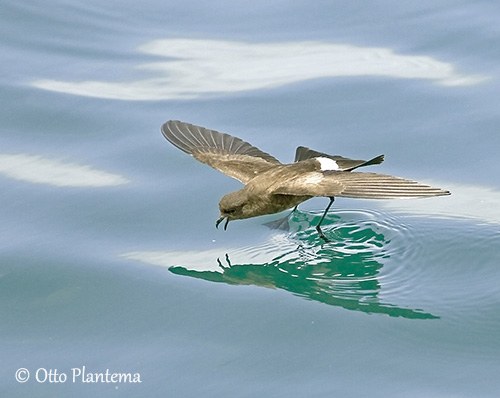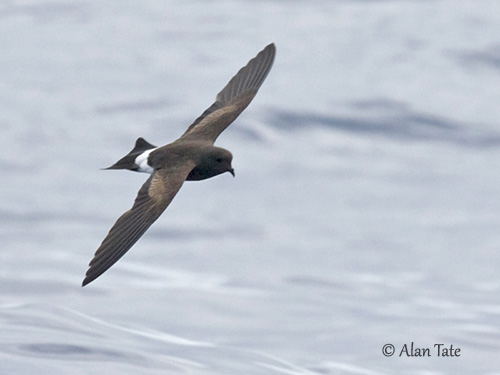
Fr: Océanite de Castro
Ang: Band-rumped Storm-Petrel - Harcourt's Storm Petrel - Madeiran Petrel - Madeiran Storm Petrel
All: Madeirawellenläufer
Esp: Paíño de Madeira
Ita: Uccello delle tempeste di Castro
Nd: Madeirastormvogeltje
Sd: oceanlöpare
Photographers:
Otto Plantema
Trips around the world
Alan & Ann Tate
AA Bird Photography
Text by Nicole Bouglouan
Sources:
HANDBOOK OF THE BIRDS OF THE WORLD vol 1 by Josep del Hoyo-Andrew Elliot-Jordi Sargatal - Lynx Edicions - ISBN: 8487334105
Petrels, Albatrosses, and Storm-Petrels of North America: A Photographic Guide De Steve N. G. Howell – Editor: Princeton University Press, 2012 – ISBN: 0691142114, 9780691142111 – 482pages
ResearchGate - Occurrence and identification of the Band-rumped Storm-Petrel (Oceanodroma castro) complex off North Carolina
Madeira Birdwatching
QUASAR - Band-rumped Storm-petrel - A GALAPAGOS SEA BIRD
Kaua'i Endangered Seabird Recovery Project
South Dakota Birds and Birding – (Terry L. Sohl)
What is known about the enigmatic Gulf of Guinea band-rumped storm petrels Hydrobates cf. castro?
Louisiana Ornithological Society
Wikipedia, the free encyclopaedia
Band-rumped Storm Petrel
Hydrobates castro
Procellariiformes Order – Hydrobatidae Family
INTRODUCTION:
The Band-rumped Storm-Petrel occurs throughout tropical and subtropical regions in Atlantic and Pacific Oceans. Depending on scientists, there could be at least nine geographically distinct populations breeding in remote locations, including Japan, Galapagos Islands and also islands in the Atlantic Ocean, as well as in Hawaiian Islands, and Cocos Island off Costa Rica.
From recent studies of genetics and vocalizations, there is a considerable diversity within Band-rumped Storm-Petrels, with at least five in the Atlantic and four in the Pacific.
The Band-rumped Storm-Petrel is a medium-sized seabird with white patch on rump like several other species, making difficult to identify the bird at sea and from a boat.
The species is highly pelagic and usually occurs in warm waters. It breeds on remote, undisturbed islets, both in flat areas near the sea and inland on cliffs, sometimes at high elevations. The Band-rumped Storm-Petrel nests in burrows or rock crevices, and a single egg per season is laid. Both parents share the nesting duties.
As usual, it feeds on planktonic crustaceans, small fish and squid. It forages on the wing by pattering and dipping.
The Band-rumped Storm-Petrel is threatened by invasive mammalian species on its breeding islands, involving largely restricted breeding habitat. Light pollution is also a problem, especially on Canary Islands and Hawaii.
The population is suspected to be declining, but the species is not considered globally threatened at the moment.

DESCRIPTION OF THE BIRD:
Biometrics:
Length: 18-20 cm
Wingspan: 44-47 cm
Weight: 34-50 gr
The Band-rumped Storm-Petrel has blackish-brown to ash-black plumage overall, but a sharp, narrow, white band is conspicuous across the rump. The lower rump is white too, the uppertail-coverts show small black tips, like the bases of the outer rectrices. The white rump band extends slightly onto the lateral undertail-coverts. This detail is visible below the wings while the bird is at rest.
On the upperwing, we can see a paler, brownish-grey wingbar across the upperwing-coverts. The wingbar does not extend to the leading edge of the wing. In worn plumage, it becomes more conspicuous.
The bill is black. The eyes are dark brown. Legs and feet are black.
Male and female are similar.
The juvenile has dark grey greater-coverts with whitish tips on the upperwing. The overall plumage is adult-like.
The Band-rumped Storm-Petrel is often confused with the Leach’s Storm-Petrel and the Wilson’s Storm-Petrel.
It is mainly identified by its flight pattern, comparatively steady and stable. The bird often glides on flat wings like a shearwater. The most important features to separate the species are wing and tail shape.
The Wilson’s Storm-Petrel is smaller than the present species.
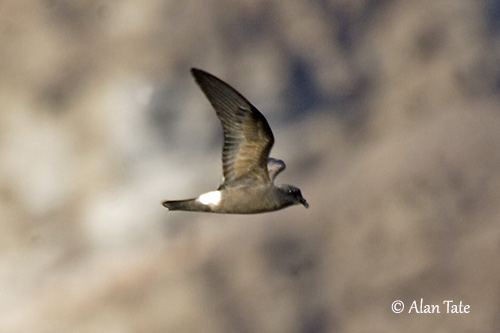
RANGE:
The Band-rumped Storm-Petrel breeds on islands in the warmer parts of Atlantic and Pacific Oceans. It is found in the Berlengas (off mainland Portugal), the Azores, Madeira, Canary Islands and St Helena in the Atlantic.
See St Helena Island here: Endemic bird's species - UK Sub Antarctic Islands (South Georgia - South Sandwich Islands - Falkland Islands - St Helena - Ascension and Tristan da Cunha)
In the Pacific Ocean, the species breeds off eastern Japan, on Kaua’i, Hawaii and also the Galapagos Islands.
After breeding, it disperses widely from the colonies, but most of the routes are unknown as it is difficult to separate this species from similar seabirds.
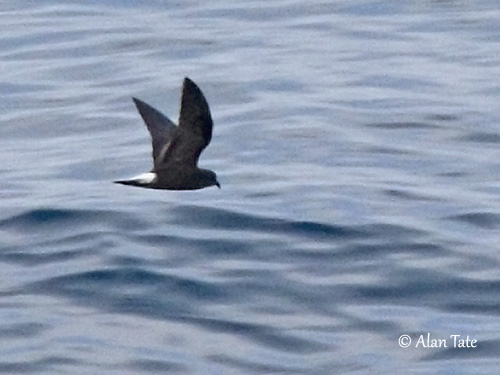
HABITAT:
The Band-rumped Storm-Petrel is highly pelagic and only comes to the shore for breeding.
It is found on rocky island areas during the breeding season. These islands must be free of predators or be inaccessible to them.
The Band-rumped Storm-Petrel breeds on very steep cliffs (Hawaiian Is) but some of them may also nest on barren lava flows at top of volcanoes.
In the Galapagos Islands, the nests are dug under boulders in gullies, but also on steep slopes and cliffs.
On Ascension Island, it nests in holes in cliffs and under boulders, or digs a burrow in soil, mud or guano.
See Ascension Island here: Endemic bird's species - UK Sub Antarctic Islands (South Georgia - South Sandwich Islands - Falkland Islands - St Helena - Ascension and Tristan da Cunha)
The non-breeding birds are pelagic and spend most of their time over warmer waters, both in Atlantic and Pacific Oceans.
-at3.jpg)
CALLS AND SONGS: SOUNDS BY XENO-CANTO
The Band-rumped Storm-Petrel is apparently silent at sea.
At the colonies, two types of sounds, chattering and purring, can be heard.
The flight call is an irregular repetition of a short phrase described as “kair chuk-a-chuk chuk chuk, kair chuk-a-chuck chuk chuk...". During the displays, the calls may become more rapid and harsher. They are used to communicate between mates, or during nest-defence, mate attraction and encounters between males.
In the burrow, the birds utter a guttural purring “urr-rrr-rrr-rrr-rrr” sometimes interspersed with “wicka” notes. It is used during pair-bond formation and maintenance.
Prior to copulation inside the burrow, a subdued call can be heard “wick-ick-ick”.
The Band-rumped Storm-Petrel vocalizes while flying to the nest at night, or from the burrow if disturbed at night by other birds.
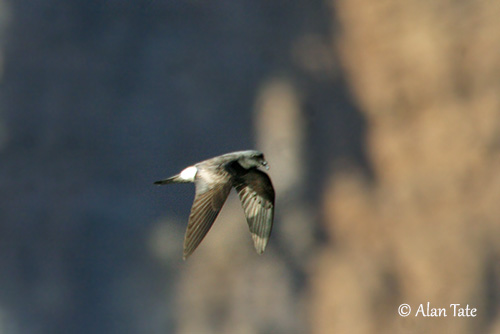
BEHAVIOUR IN THE WILD:
The Band-rumped Storm-Petrel typically feeds by picking up food items from water surface. Its diet includes small planktonic crustaceans, small fish and small squid.
It forages by hovering or flying low over the water. As soon as a prey is detected, it dips down to catch it, often pattering the feet on the surface in typical foraging behaviour.
But the Band-rumped Storm-Petrel also swims on water surface while plucking prey with the bill. It may occasionally make very shallow dives when pursuing a prey.
It usually forages by day, but it may also forage at night to avoid predation.
-at1.jpg)
The Band-rumped Storm-Petrel is a monogamous species.
Some courtship displays have been observed, including an aerial chase of two birds, and a bird calling from the burrow. Other display shows the birds gliding with the wings held high above the back while they are hopping over each other.
The Band-rumped Storm-Petrel nests in abandoned or excavated burrows or in burrows from the previous seasons. A pre-laying period occurs after nest selection and mating. This absence is longer in females, allowing them to accumulate food reserves for egg formation. Both adults share the nesting duties.
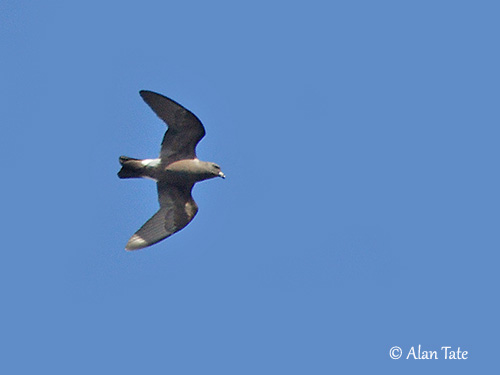
REPRODUCTION OF THIS SPECIES:
The breeding season varies depending on the location. Some islands such as Galapagos Islands, Azores and Madeira have two distinct populations that breed disjointly.
On eastern Atlantic Islands, the species breeds only once/year during the cool season.
In the Berlengas and Savages Islands, they breed from May to October.
On Ascension Island and St Helena, the seasonally segregated populations breed from April to September and from October to March.
The Cape Verde population breeds in October with peak laying in January and February.
In Hawaii, they breed from late May to November.
The Band-rumped Storm-Petrel nests in burrows or rock crevices. It breeds in colonies, often mixed-species colonies with other petrels.
The burrow dimensions are 13 cm wide by 11 cm high and 34 cm deep. There are about 9 metres between the nest-sites. No mention of addition of materials in the burrow, but debris of the previous season are removed.
The female lays a single white egg. The incubation lasts 38-42 days, with stints of 4-7 days.
At hatching, the chick is covered with pale grey down. It is brooded for the first week and mainly fed at night by regurgitation. It fledges 59-73 days after hatching.
-at2.jpg)
PROTECTION / THREATS / STATUS:
The Band-rumped Storm-Petrel is threatened by invasive mammalian predators, involving restriction of breeding locations. Introduced species such as cats, House Rats (Rattus rattus), Polynesian Rats (Rattus exulans) and Indian Mongooses (Herpestes auropunctatus) are significant predators.
On Kaua’i, the major predator in the Barn Owl – Tyto alba that attacks and kills the adults.
Like numerous seabirds, he Band-rumped Storm-Petrel is attracted by lights in Canary Islands and Hawaii.
The size of the population is roughly estimated to number 150,000 individuals (2004).
The European population is estimated at 13,100/13,700 mature individuals (2015).
The Band-rumped Storm-Petrel is present in several protected areas, but the population is suspected to be declining. However, the species is currently evaluated as Least Concern.
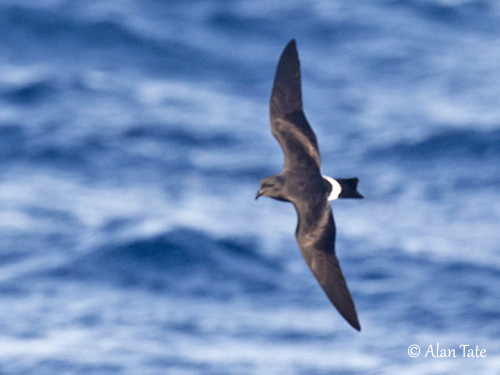
The Band-rumped Storm-Petrel disperses widely from colonies following the breeding season.
In the Atlantic Ocean, individuals from eastern breeding islands are regular and common visitors to the Gulf of Mexico of North America from April to September. They remain at sea except when blown by storms.
Movements between Atlantic and Pacific populations are unlikely, as storm-petrels avoid overland flights.
Information is rare, due to difficulty in separating this species from similar others. It does not follow the ships and visits the colonies at night.
The Band-rumped Storm-Petrel flies with relatively shallow wingbeats, and glides on slightly bowed wings as a regular part of the flight. It progresses in a zigzag manner, and may become occasionally erratic.
